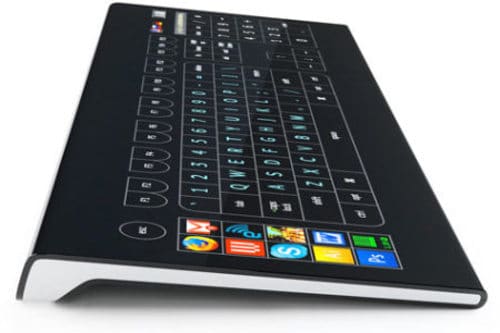For all of the advances in computer science in the last 30 years, one component has remained relatively the same through every update: The keyboard. Why? Because of all of the functions for which we use the computer, typing is the one done from what boils down to muscle memory. The location of each key is ingrained after years of use, so any drastic change to the keyboard would result in re-learning how to type.
Therefore, keyboards (albeit some changes to shape, color, and material) have remained the same for decades. Until now: Scientists have created a keyboard that not only generates energy with each keystroke, but also detects the user based on keystroke habits, such as speed, pressure, and typing style.
Not only is it good news for the long-neglected keyboard, but it’s an excellent sign for adaptive tech, where technology actually conforms to the user (and not the other way around). Adaptive tech is a vital component of personalized eLearning, increased engagement, and improved functionality.
If it Ain’t Broke…
Sure, your keyboard probably works just fine, but it’s what you do with your keyboard that can make it less effective. Consider this scenario: You store financial information on your computer, but you’re smart and protect it with a password. But we all know that passwords are anything but infallible, and if you’re like most people, your password isn’t exactly CIA-level.
That’s where a new and improved adaptive keyboard comes into play. By detecting the user based on the user’s typing habits, the keyboard can lock out anyone who isn’t authorized to access certain material. Cool, right?
Adaptive Advancement
Adaptive technology might be great for people who still use “password” as their password, but we’re more excited about the larger picture here. When technology assimilates to the user, that user gains a more personal experience. Less time is then spent adjusting settings and telling the technology who you are, and more of the details are sorted automatically by the technology itself.
Obviously, this has excellent applications in eLearning. Adaptive eLearning (where the material conforms to a person’s profile, location, language, position, and other factors) makes grabbing the necessary information faster and more effective. Consider a sales floor manager who needs the latest information about a new model of car. Rather than signing into a module, choosing her dealership, and then selecting the car, the module might already detect location and position, making navigation that much easier.
The creation of this keyboard proves that what we now know and utilize about adaptive tech is just the tip of the iceberg. The bottom line? More and more people want their technology to seamlessly combine with their lives. Changing out your old crumb-catching keyboard for something a little more 21st century might be the first step in adapting to adaptive technology – and whatever else comes next. For more information on the development of this keyboard, check out the original study here.






